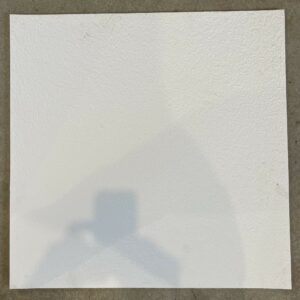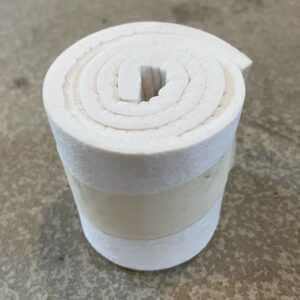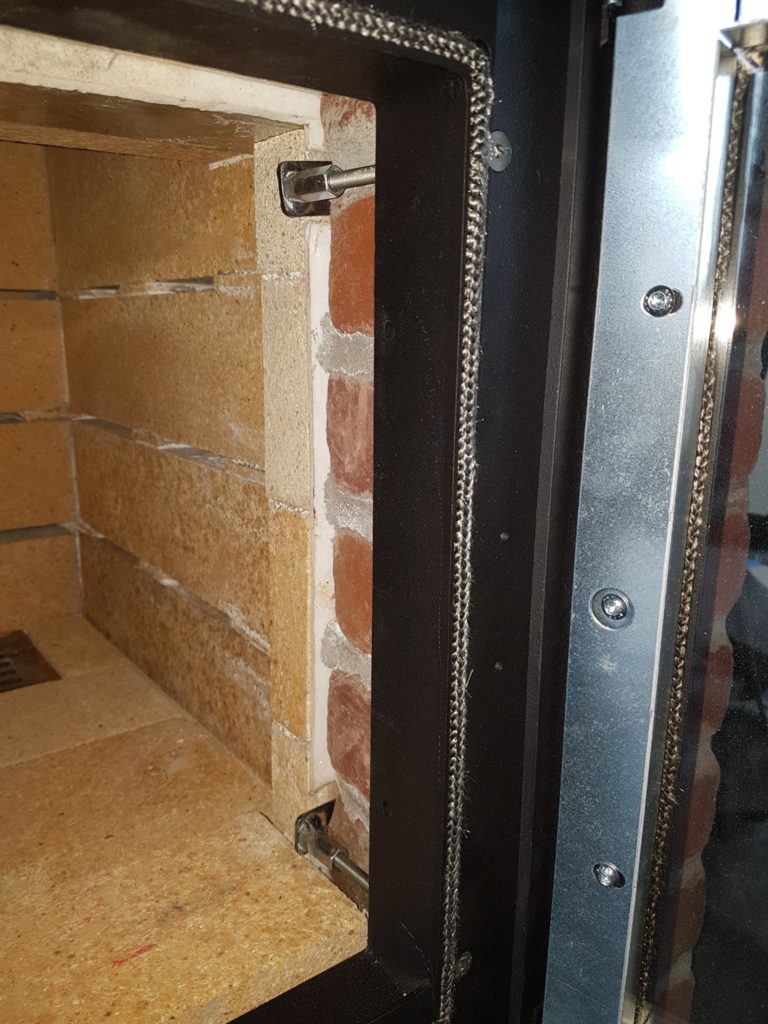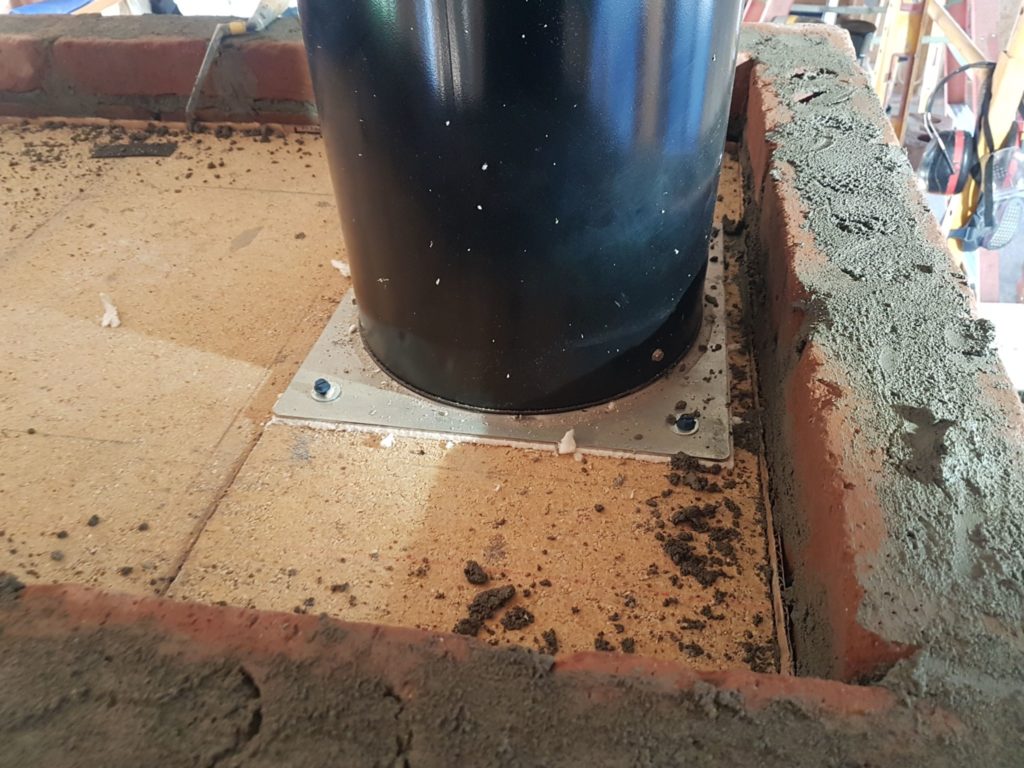
It is important to create a continuous expansion joint between the core and facing of a masonry heater. It is inevitable that the core will undergo significant thermal expansion and you want to isolate the resulting cracks in the masonry to the inside core.
The materials we use for such expansion joints are a combination of 1/4″ ceramic paper surrounding all openings and then single-corrugated cardboard everywhere else. The cardboard both gives the bond break we need to provide a vertical slip joint for the core as well as sufficient “sponge” to allow for 1/8″ horizontal expansion on all sides, while at the same time not creating too much of a thermal break which would cut conduction from the core to the facing. Using 1/4″ ceramic paper around the openings ensures that this potentially combustible expansion joint is sealed from access to oxygen by a similar, yet more technically robust (and more expensive) material. In general, I make the ceramic paper seal 2 3/8″ thick which is conveniently the width of most levels. It is good practice to use additional ceramic paper above the firebox opening where things are hottest to ensure that the facing is additionally protected there.
I line the cardboard flush to the top of the heater. Once I have built my masonry up past the core, I line that with 1/4″ ceramic paper and then fill with my insulative mix of perlite and clay/lime/cement.
I am picky with my cardboard… specifically picking large sheets of single-corrugated cardboard and cutting and taping at the corners rather than bending around corners so that I don’t get any annoying bowing in the field that is pushing out against my facing. Avoid using double corrugated cardboard and cardboard with glossy inked surfaces. I use cardboard that hasn’t been walked on or otherwise had its corrugation compressed.
This technique works well although it can be time-consuming, taking up to a half day, to detail correctly.
For context, here are some different strategies out there include:
- dry-jointing, cardboarding only corners
- this seems mostly only do-able if you are building the facing first
- doing a full wrap of 1/4″ ceramic paper
- more expensive / less conductive.
- using other materials such as fiberglass cloth
- probably has the most promise



-
 1/4″ Gasket: 24″ x 24″$26.00
1/4″ Gasket: 24″ x 24″$26.00 -
 1/4″ Gasket: 2 1/2″ x 24″$5.00
1/4″ Gasket: 2 1/2″ x 24″$5.00


